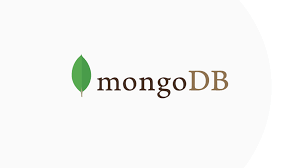Learn more about MongoDB Aggregation Pipeline Lookup. Our MongoDB Support team is here to help you with your questions and concerns.
MongoDB Aggregation Pipeline Lookup | About
The Aggregation Pipeline in MongoDB is a great tool that helps with handling and analyzing data stored in collections.
Among the main stages within this pipeline, the $lookup step is a game-changer. It helps with the left outer joins between two collections.

Today, we are going to take a closer look at the $lookup stage, its applications, and its potential.
The $lookup stage is the go-to tool for enriching documents. It combines a collection with reference data or generates extensive reports by combining data from several collections.
Here are the parameters of the $lookup stage:
- `from`: The name of the collection to be merged with the existing one.
- `localField`: The field in the current collection serving as the join key.
- `foreignField`: The field in the “from” collection serving as the join key.
- `as`: The name of the new array field in the result document, encapsulating the outcomes of the join.
Syntax for $lookup Stage
{
$lookup:
{
from: <collection to join>,
localField: <field from the input documents>,
foreignField: <field from the documents of the "from" collection>,
as: <output array field>
}
}
Here is an example to understand how the $lookup stage. . In this case, we are working with the “sample_mflix” database and the “comments” collection. The goal is to enrich the comments with movie details through a left outer join with the “movies” collection.
db.orders.aggregate([
{
$lookup: {
from: "customers",
localField: "customer_id",
foreignField: "_id",
as: "customer_info",
},
},
{
$match: {
"customer_info": { $ne: [] } // Exclude orders without matching customers
}
},
{
$limit: 3
}
])
In the above example, we are working with an “orders” collection and want to enrich each order document with information about the corresponding customer.
The $lookup stage performs a left outer join with the “customers” collection based on the “customer_id” field, creating a new array field “customer_info” in the result document.
The $match stage ensures that only orders with matching customers are included, and the $limit stage limits the output to the first three enriched orders.
[Need assistance with a different issue? Our team is available 24/7.]
Conclusion
In brief, our Support Experts introduced us to MongoDB Aggregation Pipeline Lookup.
PREVENT YOUR SERVER FROM CRASHING!
Never again lose customers to poor server speed! Let us help you.
Our server experts will monitor & maintain your server 24/7 so that it remains lightning fast and secure.







0 Comments